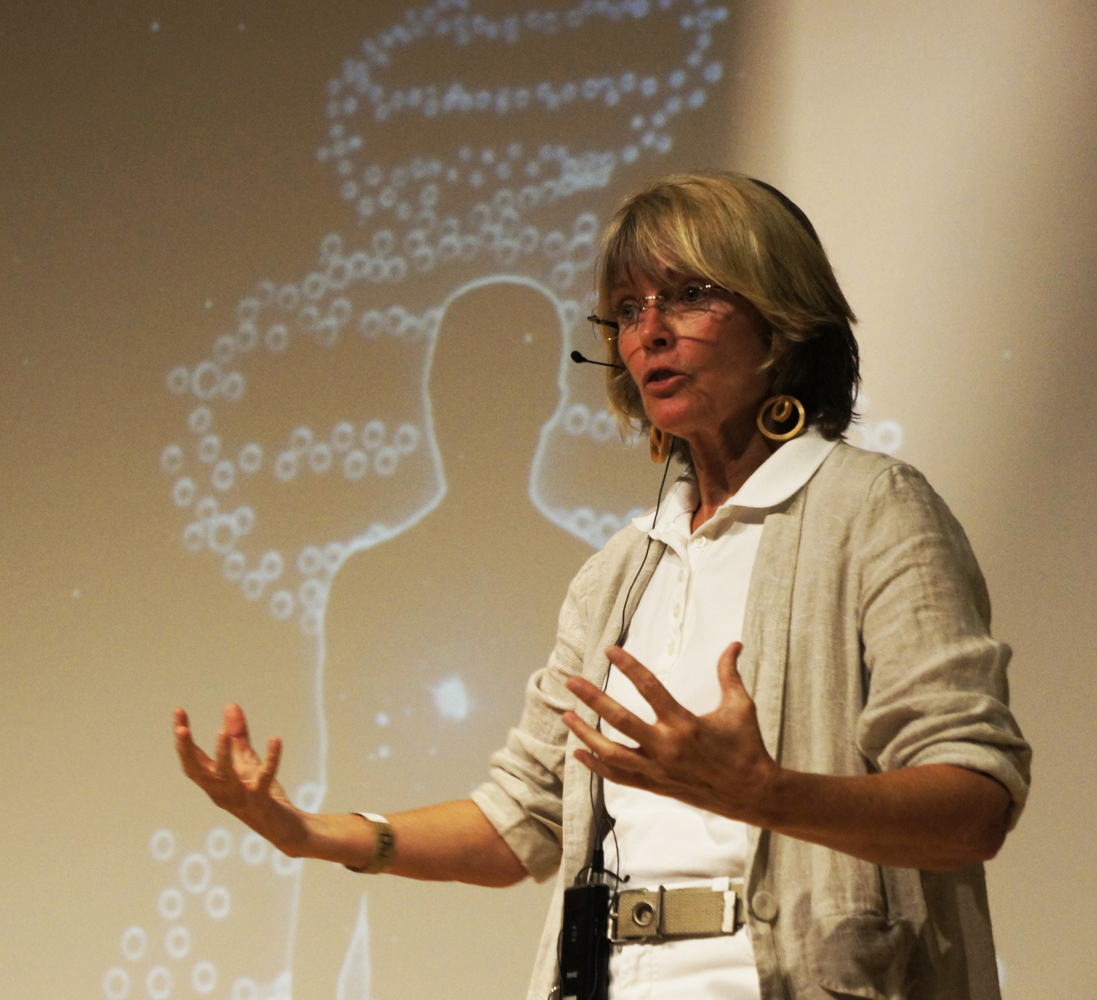“Galacidalacidesoxiribunucleicacid” is one of Salvador Dalí’s masterworks hanging at the Dalí Museum in St. Petersburg. The title is the longest of all his paintings, something Dalí did intentionally to comment on the shortness of modern art titles at the time.
But the title reveals Dalí’s love and appreciation for science and DNA, said Peter Tush, curator of education at the museum. The museum held a discussion on DNA in Dalí’s paintings on Sept. 8.
“Dalí wanted ideas and felt most artists had become craftsmen,” Tush said. “He felt modern art had played itself out and that ideas were in science.”
Tush said Dalí always loved science, but visual references played a bigger role in his work later on. References to 13th Century Italian mathematician Fibanocci’s spirals in nature pop up in many of Dalí’s paintings.
“The Rhino horn has a logarithmic spiral that defines the shape of the horn,” Tush said. “Also, the cauliflower floret is a series of perfect mathematical spirals. These objects in nature proved cosmic existence to Dalí.”
The drooping clocks in “The Persistence of Memory” reference how memory is perpetuated genetically, Tush said.
USF St. Petersburg Associate Professor of Biology, Debbie Cassill, talked about the immortality of genetics in her keynote speech at the event.
“Our soul lives in our sperm and eggs,” Cassill said. “The male’s soul leaves the body during sex rather than at death. The female’s soul leaves the body at the time of childbirth. The afterlife is exhibited in our children.”
All living organisms’ DNA sequences are formed from four nucleic acids—thymine, adenine, guanine and cytosine.
“Today’s humans and chimpanzees share 98.4 percent of our DNA,” Cassill said. “We are more closely related to chimps than chimps are to gorillas.”
James Watson and Francis Crick discovered the double-helix structure of DNA in 1953. Dalí admired Crick and Watson but the feelings weren’t mutual.
“I thought he was a fascist creep,” John Watson once said of Dalí.
Later, Watson and Dalí were both staying at the same hotel and Watson wrote to Dalí to invite him to lunch. Playing to the artist’s ego, Watson wrote “The second brightest person in the world wishes to meet the brightest.”
But Cassill said Crick and Watson took the bulk of credit for DNA, when really there were many discoveries before theirs that paved the way. Friedrich Miescher discovered DNA in 1869, after studying pus of old bandages.
“He extracted pus from the bandages and characterized what the four nucleic acids looked like,” Cassill said.
In 1952, Rosalind Franklin characterized DNA’s molecular structure using X-ray imaging.
“Crick and Watson were playboys, but Rosalind was very quiet and didn’t reveal her studies,” Cassill said. “She characterized the double-helix structure but no one knew because she died of cancer at the age of 37.”
But Crick and Watson continued trying to piece together all the information on DNA. To do it, Watson built tinker toys in the lab while Crick would crunch numbers of the formation.
“Watson was cutting cardboard shapes and moving puzzle pieces around trying to figure out how they fit,” Cassill said. “It came together spontaneously and Watson built the double-helix structure and Crick verified that the math worked.”
“A structure this pretty just had to exist,” Watson said after the discovery.
Dalí believed Crick and Watson’s discovery proved cosmic existence, though Watson thought it did just the opposite. Cassill agrees with Dalí and says that genetics are our immortality.
“Dalí was right,” Cassill said. “Through DNA we do have proof of God.”
Cassill’s talk is part of an ongoing series held on the second Thursday of the month, focusing on Dalí scientifically. The next talk is Thursday, Oct. 13 at 6 p.m.
Topics will include paranoia, death and sexual practices in Dalí’s paintings. Cassill hinted that the next session could focus on masturbation and Dalí. The series is free to all and takes place in the downstairs theatre. Ticks to the Dalí Museum are free to USFSP students everyday with a student ID.
Photo by Arielle Stevenson



